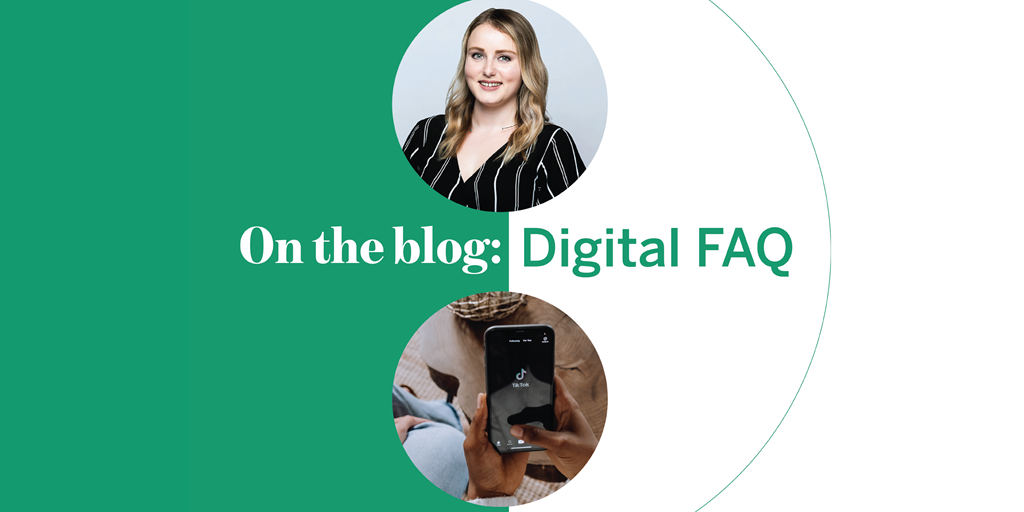Do I need to be on TikTok?

There’s a reason this is the top-asked question from our clients these days; TikTok is a bona fide hit. The number of users has quadrupled since 2018 to over 800 million at the end of last year, and those users spend on average 52 minutes a day in the addictive video-based app.
Naturally, brands are taking notice, and wondering if they need to jump on the TikTok train themselves. While it’s smart for most B2C brands to use TikTok in some capacity, ask yourself a few questions before setting your strategy.
Do I want to reach Gen Z? A large chunk of the app’s users are ages 16-24, which is an increasingly powerful demographic, but not one all companies are looking to attract.
If yes, can you commit to creating compelling video content on a regular basis? Videos can go viral quickly on TikTok, but the app demands a high level of creativity, knowledge of trends, editing skills and personable on-camera faces. Wilbert can work with your team to define your TikTok story and create content, but authenticity and consistency are key for success here. One great example is the Washington Post’s TikTok, delivering the headlines with one dynamic on-camera personality.
If you’re not sure about committing to creating your own viral videos, one tactic we recommend is working with TikTok influencers, a growing phenomenon on the app, to promote your brand to their existing audiences. Like Instagram, TikTok influencers cover many different beats and locations and can get your message across effectively.
Another option if your objective is traffic, sales or number of downloads, TikTok ads are an effective way to increase these metrics across a younger demographic.
How do I know when to join in on a meme?
We’ve seen it happen dozens of times. A funny image is posted on Twitter, and within 24 hours, it’s plastered all over the internet, like the now-ubiquitous photo of Senator Bernie Sanders simply trying to stay warm during the recent Presidential inauguration.
While the first wave of memes in a situation like this are typically well-received and have potential for high reach and engagement, meme trends often fade away as quickly as they arrive, usually within a day or two. The level of creativity slips as everyone scrambles to jump on the trend. So, when you see an opportunity to Photoshop a mitten-wearing politician in front of your business, should you jump on it?
Like with TikTok, I ask you to answer two questions:
- Am I late? Is the meme just gaining traction, or on the way down? If you’re on the cusp of a trend and can get your post up quickly, move on to the second question. If the “meme market” is oversaturated, it’s okay to skip it. You can catch the next one.
- Is this content relevant to my brand’s messaging? Is it creative? If the meme is still timely and you are, for example, the social media manager at HBO MAX, this photo of Bernie joining the Sex and the City reboot may strike social media gold. However, if you don’t have a strong idea that makes your team laugh, again, it’s okay to skip it. There will be another meme soon.
One strong example of hopping on a meme correctly is Popeye’s reaction to the recent stock market shake-up and #HoldTheLine trend, brilliantly promoting their chicken tenders using the hot term “tendies” used by the Reddit investors.
When should you create a new hashtag?
Hashtags are used across social media platforms to aggregate content, and have even made their way into the common vernacular of the internet age. They’re here to stay, but many brands are not using them effectively to increase the reach of their content, promote campaigns and collect user-generated content.
A common question we get is when to create your own hashtag; and brands wantonly creating hashtags is a common mistake we spot in feeds. Hashtags should be used for one of two reasons:
- Hopping onto an existing, populated hashtag to insert your content into that feed (i.e. #CRE, #ICSCRECon, #MondayMotivation, #BlackHistoryMonth)
- Creating your own hashtag around a specific campaign and objective
The second use does not mean that you should create a new hashtag for every post, event or promotion you run. If I caption a photo of myself eating a donut with #MeredithEatingADonut, it doesn’t help the reach of my post or aggregate content. However, if I want to promote a series where every week I eat a different donut, and I want my followers to be able to access all of those posts in one place and for donut shops to know about the trend, #MeredithEatingADonut will be a strong hashtag for me. If I want to give away a dozen donuts to anyone who posts a photo of a donut with #MeredithEatingADonut, that would likely be a successful initiative for me, too.
For most of our mixed-use development clients, we recommend a central hashtag like #PeachtreeCenter or #AtlanticStation for visitors and partners to use, and a few times per year, we will introduce new hashtags such as one around a mural onsite or big holiday event, to aggregate that content and promote the offering.
Another example is a campaign we’re currently running with Georgia’s Own Credit Union called #GeorgiasOwnHBCU, where users can use the hashtag to nominate HBCU professors and students for a $1,000 grant and recognition on the landmark Georgia’s Own sign in Downtown Atlanta.